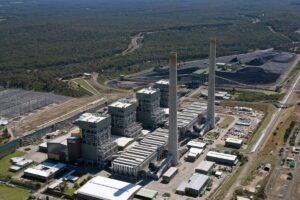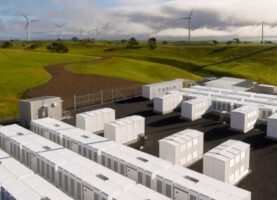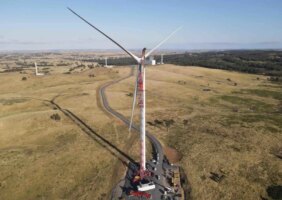A ground-breaking initiative from some of South Australia’s biggest industrial users of electricity could pave the way for more wind and solar farms in the state, and finally open the Australian market for more corporate deals with wind and solar farm developers.
The South Australian Chamber of Mines and Energy (SACOME) this week won approval from the Australian Competition and Consumer Commission for 19 big industrial users to band together to negotiate long-term electricity contracts, having grown tired of the soaring prices and short-term contracts being offered by the state’s retail oligopoly.
The companies – which include Nyrstar, Arrium, Oz Minerals, and a collection of high profile auto groups, food companies, retailers, wineries and universities (see full list below) – account for 15 per cent of the state’s electricity demand.
Most have been hit with electricity price rises of between 30 and 80 per cent in the last year, and are now paying between 8c/kWh and 15c/kWh for their electricity, and are unable to get any long-term contracts.
SACOME’s Rebecca Knol says the tender is not designed to favour one technology or another, and they would welcome either renewables or gas. “We are not predicting the outcome,” she told RenewEconomy. “We don’t have a preference.”
The move, she says, is more about challenging the pricing power of the retail oligopoly. “By aggregating their load, they will improve their individual bargaining position and be able to establish more cost-competitive supply contracts,” Knol said.
But a quick glance at prices for new wind and solar farms, and for gas generation, puts renewables in the driving seat.
Wind and solar farms are being delivered for around 7c/kWh, but even the short-run marginal cost of gas generators (i.e.. the fuel and maintenance cost) ranges from 7c/kWh to more than 12c/kWh.
That price does not include the capital cost of the plant, and reflects a gas price of $9/gigajoule – where it has been trading in recent weeks, but well below the peak of more than $20/Gj.
Deutsche Bank, which put together the graph above, says even Pelican Point, the state’s most modern and efficient gas plant, has short-run marginal cost of around $80/MWh under a $9/GJ gas price assumption, and that is far below the electricity forward curve for peak load.
This, it would seem, would present a major opportunity for wind and solar, including existing plants that don’t currently have a power purchase agreement.
The total load of 19 industrial users (19 companies, 24 installations) is 246MW at peak, and represents annual demand of 1,957GWh. Most interestingly for the wind and solar plants, the businesses are offering an 11 year contract – a length of contract that has been all but impossible to secure from large retailers.
“We are looking for opportunities to improve the electricity price so our businesses can stay competitive,” Knol says. “What we are hoping is that they do see this as opportunity to change the wholesale market. It could bring on a new generator, or it could be with an existing generator.”
Australian corporates have been slow to engage with renewable energy developers – possibly given the fact that the fall in wind and solar costs below the prevailing wholesale price of electricity is only very recent.
Queensland zinc refiner Sun Metals, that state’s largest single energy user, is one exception, having decided to build its own 116MW solar farm, rather than commission a third party. The Sunshine Coast Council is also building its own 15MW solar farm in south-east Queensland.
Despite persistent “talk” of growing corporate interest, most other major tenders have focused on government contracts, either to meet specific loads such as government businesses, or tram and train networks, or simply to underpin new renewable energy developments in their state.
Almost all state government have tendered, or are tendering for renewable energy supply in some form or another. In South Australia, the state is looking for dispatchable small-scale renewables to provide 25 per cent of its needs, and a “new generator” – either renewables or gas – to provide dispatchable generation for the rest of its needs.
The SACOME tender means that 20 per cent of the state’s electricity demand is now up for auction as both the government and the major energy users try to break the stranglehold over pricing held by the dominant retailers.
There are more than 1500MW of large-scale solar and wind farms saying they are ready for construction, but it appears that only two – the 220MW Bungala solar farm, and the 212MW Lincoln Gap wind farm, both near Port Augusta – have power purchase agreements.
The original application included: Nyrstar, Arrium, OZ Minerals, Hillgrove Resources, Rex Minerals, Seeley International, SMR Automotive, Thomas Foods and Intercast & Forge.
Since the application was made in January 2017, Peregrine Corporation, Foodland, Independent Grocers of Australia (IGA), Pernod Ricard Winemakers, Orora Glass, Brickworks, Flinders University and the University of South Australia have also come on board.












